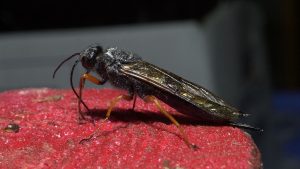#218: Neolentinus lepideus, The Train Wrecker
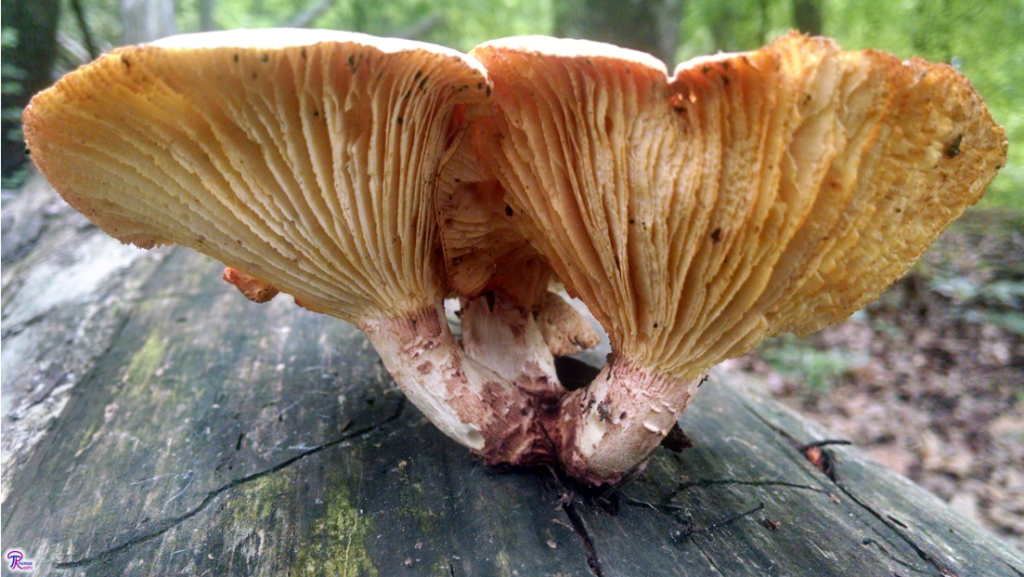
Neolentinus lepideus is commonly known as the “Train Wrecker.” The mushroom has a scaly cap and pileus and features serrated gill edges.
Neolentinus lepideus is a very tough whitish agaric with lots of scales that appears on dead conifer wood. Its gills have a serrated margin, a characteristic shared with pretty much every species that has “lentin” in its genus name. In the United States N. lepideus is called the “Train Wrecker” because it often appears on railroad ties. In most other parts of the world, the mushroom is simply called the “Scaly Lentinus.”1–3
Description
Neolentinus lepideus forms fruiting bodies with a central stipe and circular pileus. The mushrooms grow 3-15cm across and 2.5-15cm tall. The most noticeable feature of the mushroom is its cap, which is whitish with brown scales. The pileus starts out convex with an inrolled margin and expands to become flat with age. Adorning the pileus are small but noticeable brown scales. These are roughly triangular and point away from the center of the pileus, but often look like small bits that have been torn away from the pileus surface.1–3
Below the cap, the mushroom forms gills that radiate away from the central stipe. The gills may be attached to the stipe (sometimes with a notch) or decurrent. Like the cap, the gills are whitish to off-white, although one form of the Train Wrecker has yellow gills. When injured, the gills bruise brownish to yellowish. The edges of the gills are ragged to serrated, which is characteristic of Lentinellus and similar-sounding genera. This feature may take some time to develop, but it is evident on fully mature specimens.1–3
The stipe of L. lepideus is sturdy (1-3cm thick) and has a similar color and texture to the cap. The surface of the stipe cracks horizontally and peels downward to create rectangular scales that are tipped with brown. This happens at irregular intervals throughout the length of the stipe. The stipe also features a ring, which looks almost identical to the scales. The ring quickly erodes away, so it often disappears before you find the mushroom. The stipe is roughly the same width for its entire length, but sometimes enlarges toward the base. You often find that multiple caps arise from the same base, which keeps the base large.1–3
This mushroom is known for being very fibrous and tough. Its texture is closer to Cerioporus squamosus (FFF#089) than to other gilled mushrooms. The flesh is whitish and sometimes has an anise-like odor.1–3
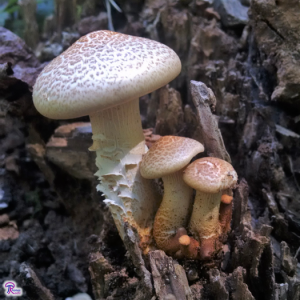
L. lepideus grows from decomposing conifer wood and often appears on railroad ties or other man-made structures.
Ecology
The Train Wrecker grows primarily on decaying conifer wood but sometimes appears on hardwood as well.1–3 In either case, the fungus causes a brown rot in the wood.3 I usually find it on logs and stumps without any bark, making it one of the later mushrooms to join in the decomposition process. The fungus is very good at what it does and can even thwart human efforts to keep decay at bay. Most notably, it can decompose railroad ties treated with creosote to slow down decay.1,4 I’ve been told that the fungus will even break down the creosote! You can also expect to find this fungus on fence posts and other outdoor wood, even if the wood has been treated with other chemicals.1 The mushrooms appear from spring through fall.1,3 L. lepideus has been recorded from most of North America and Europe and parts of Asia, Africa, and Australia.5,6 This indicates that the fungus is probably present in all temperate areas across the globe.
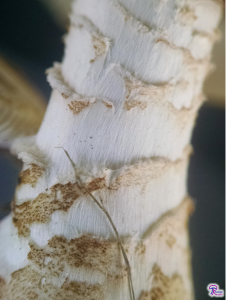
The stipe, like the cap, is scaly. If you examine the mushroom closely, you may be able to find evidence of a ring.
Similar Species
There are quite a few species of Neolentinus that are all similar to N. lepideus. Among these, N. lepideus is the only species to feature a ring on its stipe. Most of these species can be distinguished by their caps, which are smooth or hairy but not scaly. The species that most closely resembles N. lepideus is N. ponderosus.2 N. ponderosus grows in central and western North America and usually fruits on Ponderosa Pine.7 Additionally, it does not produce a ring on its stipe and has finer scales on its stipe.2,7
Edibility
Mushroom hunters in the United States consider this mushroom edible.1,2 However, I don’t know why anyone would want to eat the Train Wrecker; it is way too tough and too flavorless to be enjoyable.4 Europeans consider this mushroom inedible and I am inclined to agree with them.8 Also, you should never eat N. lepideus when it grows from railroad ties or other chemically treated wood.4 Mushrooms are very absorbent and can contain high levels of whatever chemicals were used to treat the wood.
Taxonomy
As its current scientific name suggests, Neolentinus lepideus was once called Lentinus lepideus. Lentinus used to contain a lot of visually similar mushrooms with serrated gill edges. As mycologists refined the taxonomy, various genera were spun off from Lentinus, including: Neolentinus, Lentinellus, and Lentinula. If a mushroom has distinctly serrated or ragged gill edges, its genus name likely contains “lentin” somewhere. The name Neolentinus lepideus translates to “scaly1 new Lentinus.”
N. lepideus belongs to the order Gloeophyllales.9 This small order contains an eclectic group of fungi, ranging from gilled species like the Train Wrecker to polypores like Gloeophyllum sepiarium to various crust fungi. All these mushroom produce a brown rot, but have very little in common morphologically.10 They are not closely related to the species currently in Lentinus or to other “lentin”-containing genera.
There is some confusion over the mushrooms proper name, which is not surprising when Species Fungorum lists 40 synonyms for the fungus. Mycobank reports that the current name for the Train Wrecker is Neolentinus suffrutescens while Species Fungorum reports that name as an improper synonym of N. lepideus.9,11 The name N. suffrutescens is not widely used, so you are probably safe calling the mushroom N. lepideus.
| Kingdom | Fungi |
| Subkingdom | Dikarya |
| Division (Phylum) | Basidiomycota |
| Subdivision (Subphylum) | Agaricomycotina |
| Class | Agaricomycetes |
| Order | Gloeophyllales |
| Family | Gloeophyllaceae |
| Genus | Neolentinus |
| Species | Neolentinus lepideus (Fr.) Redhead and Ginns9 |
This post is not part of a key and therefore does not contain enough information to positively identify any mushroom. When collecting for the table, always use a local field guide to identify your mushrooms down to species. If you need a quality, free field guide to North American mushrooms, I recommend Michael Kuo’s MushroomExpert.com. Remember: when in doubt, throw it out!
See Further:
http://www.svims.ca/council/Lentin.htm
http://champyves.pagesperso-orange.fr/champignons/fichier_htm/sur_arbres/lentinus_lepideus.htm (in French)
Citations
- Emberger, G. Neolentinus lepideus. First Nature (2008). Available at: https://www.messiah.edu/Oakes/fungi_on_wood//gilled%20fungi/species%20pages/Neolentinus%20lepideus.htm. (Accessed: 12th July 2018)
- Mochizuki, T. Trial field key to species of LENTINELLUS and NEOLENTINUS in the Pacific Northwest. Pacific Northwest Key Council (2002). Available at: http://www.svims.ca/council/Lentin.htm. (Accessed: 12th July 2018)
- Péan, R., Péan, G. & Bouet, C. Neolentinus lepideus(Fries) Redhead & Ginns (1985). MycoDB (2017). Available at: http://www.mycodb.fr/fiche.php?genre=Neolentinus&espece=lepideus. (Accessed: 12th July 2018)
- Smith, D. Neolentinus lepideus (Lentinus lepideus) (3 Photos and Description). FUNGIKINGDOM.net Available at: http://www.fungikingdom.net/fungi-photos/basidiomycota/polyporales-order/polyporaceae-family/neolentinus-lepideus-lentin-2.html. (Accessed: 12th July 2018)
- Occurrence Map for Neolentinus lepideus (Fr.) Redhead & Ginns. Mushroom Observer Available at: https://mushroomobserver.org/name/map/416. (Accessed: 12th July 2018)
- Neolentinus lepideus. iNaturalist.org Available at: https://www.inaturalist.org/taxa/351629-Neolentinus-lepideus. (Accessed: 12th July 2018)
- Kuo, M. Neolentinus ponderosus. MushroomExpert.Com (2015). Available at: http://www.mushroomexpert.com/neolentinus_ponderosus.html. (Accessed: 13th July 2018)
- Bernoux, J. Y. Lentinus lepideus (Fr.) Fr. 1838. ChampYves (2003). Available at: http://champyves.pagesperso-orange.fr/champignons/fichier_htm/sur_arbres/lentinus_lepideus.htm. (Accessed: 12th July 2018)
- Neolentinus lepideus. Mycobank Available at: http://www.mycobank.org/Biolomics.aspx?Table=Mycobank&Rec=36679&Fields=All. (Accessed: 12th July 2018)
- Gloeophyllales. Wikipedia (2018).
- Neolentinus lepideus (Fr.) Redhead & Ginns, Trans. Mycol. Soc. Japan 26(3): 357 (1985). Species Fungorum Available at: http://www.speciesfungorum.org/GSD/GSDspecies.asp?RecordID=104553. (Accessed: 12th July 2018)

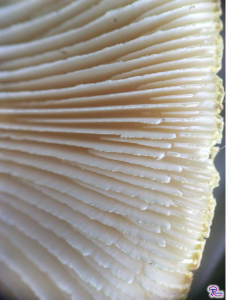
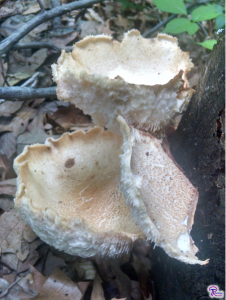
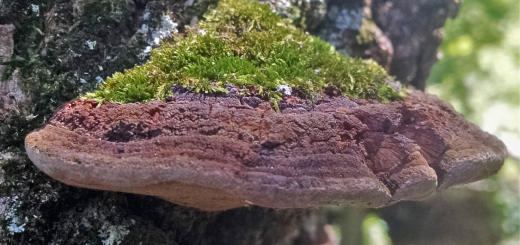

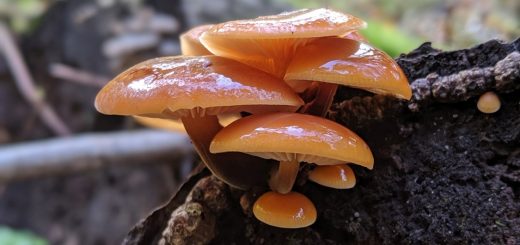





![#011: Characteristics of Kingdom Fungi [Archived]](https://www.fungusfactfriday.com/wp-content/themes/hueman/assets/front/img/thumb-small-empty.png)

